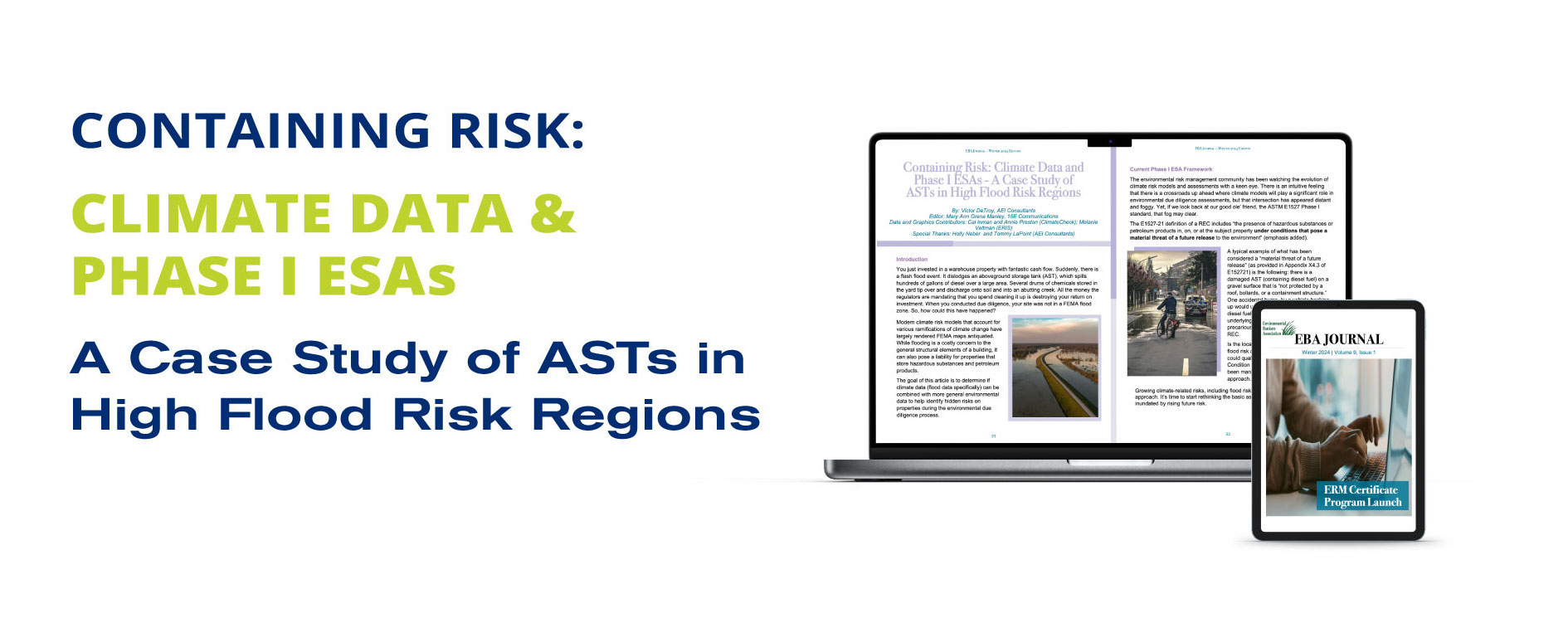Containing Risk: Climate Data and Phase I ESAs – A Case Study of ASTs in High Flood Risk Regions

 by Victor DeTroy, AEI Consultants
by Victor DeTroy, AEI Consultants
![]()
![]()
February 2024
You just invested in a warehouse property with fantastic cash flow. Suddenly, there is a flash flood event. It dislodges an aboveground storage tank (AST), which spills hundreds of gallons of diesel over a large area. Several drums of chemicals stored in the yard tip over and discharge onto soil and into an abutting creek. All the money the regulators are mandating that you spend cleaning it up is destroying your return on investment. When you conducted due diligence, your site was not in a FEMA flood zone. So, how could this have happened?
Modern climate risk models that account for various ramifications of climate change have largely rendered FEMA maps antiquated. While flooding is a costly concern to the general structural elements of a building, it can also pose a liability for properties that store hazardous substances and petroleum products.
Editor: Mary Ann Grena Manley, 15E Communications
Data and Graphics Contributors: Cal Inman and Annie Preston (ClimateCheck); Melanie Veltman (ERIS)
Special Thanks: Holly Neber and Tommy LaPoint (AEI Consultants)
Reprinted with permission from Environmental Bankers Association (EBA). To see the full EBA Journal, click here.
